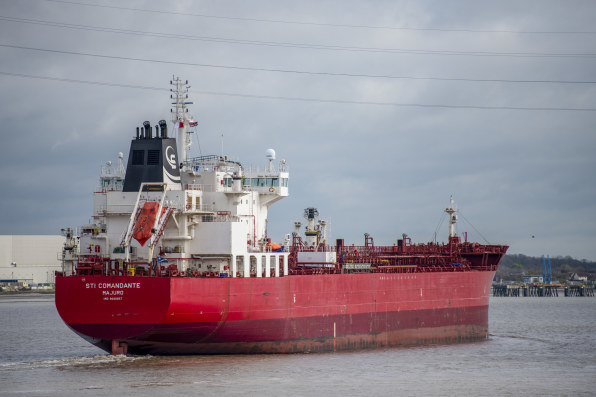Vladimir Putin’s troops withdraw from western Kherson region
Traders, tanker companies and the world’s most powerful governments are becoming increasingly fixated upon one question in the oil market: can the petroleum industry’s supply chain handle the harshest sanctions on Russian exports in history?
A vast shadow fleet of tankers with unknown owners is being amassed to service Moscow’s interests. Intense US-led diplomatic wrangling to soften aggressive European Union sanctions has been going on for months but time is ticking.

A huge fleet is assembling to help Russia deal with the looming curbs on oil exports. Bloomberg
Will it be enough? With about six weeks until the bloc’s measures enter into force, little clarity exists on whether these steps will really suffice to help the world’s third-biggest oil producer to get much of its output to buyers to fend off a supply shock.
The US has been sounding the alarm for months that Europe’s sanctions on Russia could trigger such a shock. It’s pushing for companies to be allowed to access EU services — especially insurance — to avoid a price spike before the mid-term elections in November. To do that, buyers would have to sign up to a controversial oil price cap.
What looks certain is that a large part of Russian flows will be handled by a complex — and often secretive — network of ships, owners, ports and safe passages dominated by entities still willing to deal with Russia.
“If you look at how many ships have been sold over the past six months to undisclosed buyers, it’s very clear that a fleet is being built up in order to transport this,” said Christian Ingerslev, chief executive officer of Maersk Tankers A/S in Copenhagen, which runs a fleet of 170 ships — none of them serving Russia.
In the run-up to December 5, when the EU is due to ban Russian crude imports and halt the provision of shipping, financing and insurance cover to related trades, the most important question is whether there will be enough vessels.
Shipbroker Braemar estimates that to support four million barrels a day of Russian exports to the far east, many of the recently transacted vessels will need to be added to the 240 ships — 102 Aframaxes, 58 Suezmaxes and 80 very-large crude carriers — that have carried Iranian and Venezuelan crude in the past year to form a large shadow fleet that will support Moscow.
“There’s been a sharp rise in the tanker trading since the war and in the run-up to the Dec. 5 deadline by undisclosed entities based in countries such as Dubai, Hong Kong, Singapore and Cyprus,” said Anoop Singh, head of tanker research at Braemar. Many are older ships and will find their way to the shadow fleet, with Russian shipowner Sovcomflot supplying some tankers as well.
Ship-to-ship
Beyond that, there will also almost certainly be a surge in ship-to-ship transfers — cargoes being switched from one tanker to another at sea. That’s a result of both the sanctions risk from handling exports directly from Russian ports and the need to collate a few small cargoes onto larger tankers for long-haul voyages.
That, though, is a logistical challenge in itself, especially from the Baltic Sea, Russia’s top export region.
Ship-to-ship transfers involve one vessel maneuvering itself alongside another, attaching a pipe to allow the cargo to be pumped between the two carriers. It can take up to two days and is best done in the calmest waters possible with good weather. Some can involve a multi-stage process of transferring oil from an initial tanker to a floating storage facility, before another step to move the cargo to another ship.
While vessels often used to sail straight to European buyers, Asia — notably China and India — seem certain to become the top destination after December 5.
Once the sanctions kick in, European seas will almost certainly be off limits for these so-called STS transfers, and it won’t be very helpful for Russia or its buyers to do them inside the Baltic Sea. That’s because, ideally, Asia-bound oil will be transferred onto giant supertankers that are too big to get out of the Baltic with cargoes on board.
The initial vessel would turn around after discharging its cargo to that supertanker and return for more Russian oil, creating a shuttling effect.


